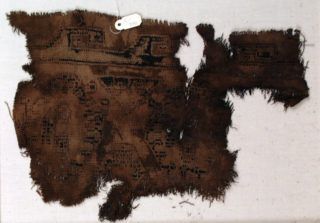South America
The Hearst Museum curates nearly 40,000 objects from South America. Max Uhle’s expeditions to the continent that were sponsored by the Museum’s founder, Phoebe Hearst, form the bulk of the South American collection. Visit the Phoebe Hearst Collections to learn more about Uhle’s work.
Smaller but significant collections were later made by Berkeley professor John Rowe and his students, such as Dorothy Menzel, Larry Dawson, and Jane Dwyer. Indeed, starting with Alfred Kroeber’s work during the 1920s, and followed by Rowe’s teaching, generations of scholars have used the Uhle collection to develop the basic chronological sequence of Peruvian Nasca pottery.
A few highlights of the South American collections include those assembled by Michael Harner from the Shuar (Jivaro) and related peoples of rain-forest Bolivia and Peru, the Peruvian textiles collected by George Miller in 1974, and the recent acquisition of Ecuador textiles donated by Rachel G. Mossman.
The single largest archaeological collection is the thousands of potsherds and other objects collected by Edward P. Lanning during his dissertation research between 1956 and 1960, mainly from the sites of Jahuay and Curayaco in Peru. This is followed by J. O. Nomland collections from coastal shellmounds in Colombia and Venezuela.
Among the smaller collections are projectile points from archaeological sites in Chile, the materials collected by Alice Francisco at Carchi, Ecuador, and a sample of potsherds from various Brazilian sites collected by the Lower Amazonia Expedition.


